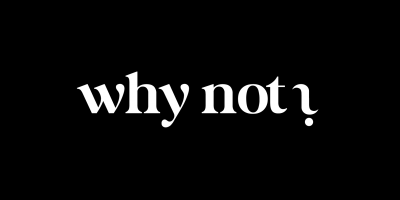Interrobang
Interrobang. The love child of English & Advertising.
Modern English – the language of our lil’ blue planet, was born in the glorious times of the Renaissance & started brewing with the alphabets & principles of the Roman Script. Just like French, Spanish, Italian, Dutch, Norwegian, German, Portuguese, Czech, Slovak, Hungarian, Polish, Danish, Welsh, Swedish, Icelandic, Finnish, and Turkish. Interestingly, the 2500 year old Roman script was originally written down in Scriptio Continua, a writing style that never had pauses, spaces, punctuations or diacritics. Probably started off as a documentation of the Emperor’s verbal diktats, & thus, were written in a never ending continuation, to avoid any self-induced garnish to the things being spoken. Well, that was then. And then boom, Plato’s concept of Trivium showed up in the works, & moulded the use of language from mere documentation to tonality & creative expression. Giving rise to the cocktail of Grammar, Logic & Rhetoric that paved ways on Papyrus for the lampblacks to express language from the nibs of Literature. And what came to life, was the immortal Art of Persuasion. Later, Aristotle saw Rhetoric as an appeal to emotion & in his own words believed that, “rhetoric is the power of perceiving in everything that which is capable of producing persuasion”.
Advertising is nothing but a grand rhetoric! It’s a brand’s persuasion using the rhetoric & its allied streams of poetics & poetry to create a compelling story, narrative, proposition or belief. The Trivium, turned language into a storytelling tool. Founding the concept of writing, inventing the whole breed of creative writers. Stories, drama, poetry, books, speeches & even documentation began adding life to language with elements of literature. Advertising, a mixed bag of all of these kinds of writings took it to the next levels of persuasion. Writing; that was selling products, making perceptions and building brands. ‘Think Small’ changed advertising forever. And brand campaigns started shifting their focus to creative concepts, from just selling the functionalities of a product. That was the next great evolution of writing. That, was the Big Bang of iconic advertising.
With the dawn of conversational writing styles in advertising, headlines in ads became more like conversations or expressions from parlance. The migration of tonality into writing started blurring the lines between spoken & written English, at least in the creative spaces. And then in 1962, Martin Speckter, an adman & a typography nerd noticed that while verbal expressions had popularly entered copywriting, the existing punctuations weren’t really bringing out the actual emotions behind them. Especially when it came to writing the advertising rhetoric. Speckter identified 3 key occasions where written English would need more than just words to express spoken English. One, when we end a statement that expresses excited disbelief; ‘Really?!’, ‘You’ve got to be kidding me?!’. Two, when we ask a question in an excited manner; ‘How cool is that?!’, ‘Don’t tell me?!’. Three, when we ask a rhetorical question’; ‘Now who’s a good boy?!’, ‘What’s in a name?!’ or Joey’s ‘Hey, how you doin’?!’. Now each of these examples, are questions with a sigh, excitement or impulse. Questions in regular parlance that are not really seeking answers, but are answers themselves. The bummer was, how does one tell when they’re written down? The best some authors could do was to suffix the question mark (?) with an exclamation mark (!) do indicate the heightened emotions. The combination made sense, but using two punctuations was like having spaghetti with spoon, it just won’t stick the way you want it to. This bugged Speckter as well. He believed that this particular emotion needed a specific punctuation for the reader to live that moment. And this itch, led to a whole new punctuation from scratch. The Interrobang (‽). He came up with a mark that combined ‘?’ & ‘!’ with grace and ease of writing. The etymology derives from the words ‘Interrogatio’ which is Latin for the Rhetorical Question & ‘Bang’ which was the printer fraternity’s slang word for the exclamation symbol. And, an all-new punctuation was born in the cradle of Shakepeare’s language, fathered by the love of 60s advertising.
Interrobang was ‘the news’ in the language world. It caught attention of all the biggies. Renowned publishers like the Times Magazine wrote articles not just about the new punctuation, they even used it once in a while in their headlines. Legendary design firm, American Type Founders known for some of the most widely used typefaces in the 20th century included the Interrobang in their legendary font Americana. In 1968, the iconic typewriter company Remington, had the Interrobang in their latest series as an optional key. So while Interrobang is not officially included in formal English language, its fans from the media, movie celebs, writers, politicians, judges, storytellers et al have been endorsing it for decades to keep it alive in conversations. Now that’s something isn’t it‽
The Interrobang is a tale written by time, philosophers & admen. Mark of imperforate expression. Symbol of emblazoned emotion. It completes, questions & exclaims all at once. And out of the centuries of evolution of the English language, ‽ could have been the only destiny’s child to rest behind our core philosophy –

Two words and a punctuation, which defines the soul & spirit of who we are.
And so, you’ll always find our version of this iconic icon at the very heart of Whyletz.
